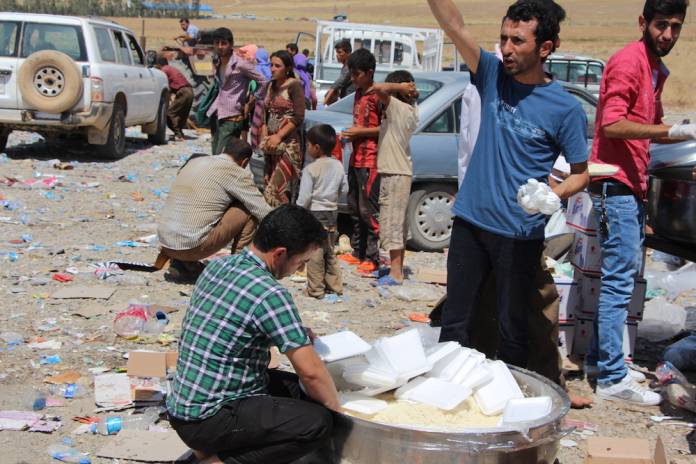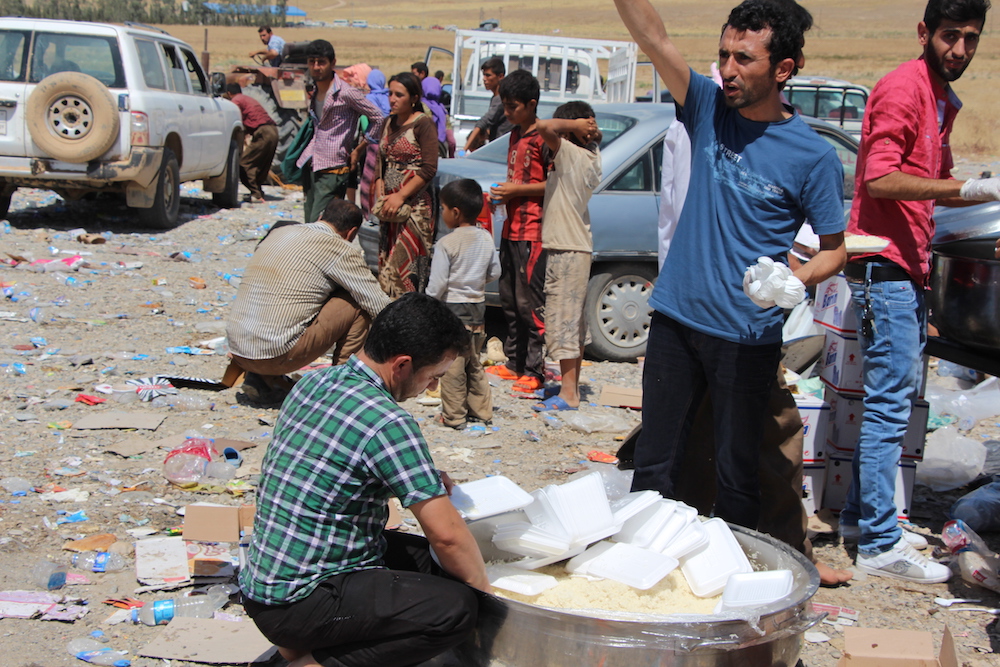
When President Obama started bombing Syria in 2014, he enjoyed bipartisan support in Washington. Americans were appalled by the atrocities of the Islamic State, which had massacred Yazidis, and seized swaths of territory in Syria and Iraq.

Far from being a humanitarian intervention, however, I warned at the time that the US was on its way to yet another Middle East war. “Once again, the U.S. is waging an open-ended war with no concern for the long-term well-being of the people in the region,” I wrote.
And, sure enough, with the Islamic State on the ropes, the Trump administration has announced that some 2000 US troops will stay permanently in the Kurdish region of northern Syria. Ostensibly, the troops will fight IS remnants and combat Iranian influence. In reality, the US seeks to remove President Basher al Assad, or failing that, dismember Syria into zones controlled by outside powers.
On Feb. 7, US jets and artillery attacked pro-Assad forces in Khusham, an oil-rich area in north eastern Syria outside of the Kurdish region. The US-allied SDF (Syrian Democratic Forces) had captured the area from the Islamic State and Assad-allied troops were trying to take it. Needless to say, the fighting had nothing to do with Yazidis or fighting remnants of the Islamic State.
Then on Feb. 9, Israel bombed a dozen sites in Syria after Assad’s artillery shot down an Israeli jet fighter. The US is allied with Israel against Assad, Russia and Iran.
The clashes are just the latest indication of the expanded role played by outside powers. And the US occupation won’t be easy. The SDF leadership currently allied with the US have their own agenda. And Turkey considers that group to be terrorists and has sent its army into Syria in an effort to wipe them out.
How did the US get into what may become yet another Mideast quagmire?
In September 2014 the US had no allies on the ground when it began bombing the Islamic State in Syria. The CIA and Pentagon had spent over a billion dollars trying to create pro-US rebel groups that would fight Assad. Both agencies failed miserably as the ostensible guerrillas took US arms and promptly handed them over to terrorist groups fighting in Syria.
Help us save local journalism!
Every tax-deductible donation helps us grow to cover the issues that mean the most to our community. Become a 48 Hills Hero and support the only daily progressive news source in the Bay Area.
But there was one existing insurgent group that effectively battled the IS. The Kurdish based PYD (Democratic Union Party) and its armed wing the YPG (People’s Protection Units) fought and won a heroic battle against the IS in the Kurdish city of Kobane. The Pentagon started arming and training the YPG, and later the SDF, which includes both Syrian Arabs and Kurds.
The problem, from a US perspective, was that the PYD is affiliated with the PKK (Kurdistan Workers Party) in Turkey, a leftist group with a quasi-anarchist ideology developed by their leader Abdullah Ocalan, now imprisoned in Turkey.
The PYD promotes women’s participation and leadership, unique among rebels in the region. It has created local councils advocating equal rights for all of Syria’s religious and ethnic groups. The PYD seeks to extend its system throughout Syria, not just in Rojava, their term for the Kurdish region.
The Pentagon was willing to ignore the PYD’s leftism and frequent praise of Ocalan because SDF could really fight.
Turkey’s leaders, however, denounce the PKK and PYD as terrorists. The PKK does engage in armed struggle, but it’s aimed at Turkey’s military and police, not civilians. The accusation of terrorism conveniently covers up Turkish government repression of its Kurdish minority.
Turkey invaded northern Syria in 2016 and seized part of the Kurdish region in order to prevent the SDF from creating a contiguous territory along the Turkish border. Turkey, like every foreign power invading Syria, proclaimed their incursions as temporary. But it set up military bases and ran electricity wires from Turkey into the Syrian cities under their control.
Then on January 20 this year Turkey launched an invasion of Afrin, an isolated area in the far northwest of Rojava. Turkish bombing of the city has already killed 150 civilians and wounded 300, according to Sinam Mohammad, the representative of the Syrian Democratic Council in the US. The council is the political wing of the SDF.
She told me that the ultimate goal of Turkey is to drive the Kurds out of Afrin in order to create a buffer zone under permanent Turkish control. She accuses the Turkish Army of ethnic cleansing. “They want to kick out the Kurds,” she said.
The Turkish military created a Syrian Arab militia, appropriating the name Free Syrian Army. The FSA developed some popular support based on Arab hostility towards Kurds and complaints that the PYD monopolizes power in areas it controls.
The FSA also stands accused of war crimes for mutilating the body of a Kurdish female fighter. FSA members shot a video of themselves standing over the partially naked body of the woman with her left breast mutilated. Sinam Mohammad compared such actions to atrocities carried out by terrorist groups.
“What’s the difference between them and Islamic State?” she said.
But the US has no plans to prevent the Turks from taking Afrin, putting the lives of hundreds of thousands of civilians in peril.
The Pentagon seems to be drawing a line at the Rojava town of Manbij, some 37 miles east of Afrin. The US sent high ranking army officers into Manjib, riding in vehicles prominently displaying US flags, accompanied by a New York Times reporter to make sure the message was received in Ankara.
For the moment, it appears the US military will maintain its alliance with Kurdish forces while Turkey will continue its military opposition, but within limits.
In my opinion, the PYD is playing a very dangerous game allying with the US. It may think the US will protect the Kurds, but nothing in history suggests it will be a reliable partner. And the people of Rojava will suffer.
“The goal of the US isn’t to help the Kurds in Rojava,” an American volunteer who fought with the YPG told me. “The goal of the US is to kill Bashar al-Assad or, if that proves impossible, to destroy the Syrian Arab Republic. If they did care about the Kurds, the US would have stopped the Turkish attack on Afrin.”
There’s an old saying commonly used in the Middle East, “The enemy of my enemy is my friend.” We Americans have another old saying, “It ain’t necessarily so.”
Reese Erlich’s syndicated column, Foreign Correspondent, appears every two weeks in 48 Hills. The revised and updated edition of his book The Iran Agenda: the Real Story of US and Policy will be published in September. Follow him on Twitter, @ReeseErlich, friend him on Facebook, Reese Erlich Foreign Correspondent, and visit his webpage www.ReeseErlich.com.

Syrian “artillery” didn’t down an Israeli F-16. Syrian SAMs did. There’s a huge difference between the two.